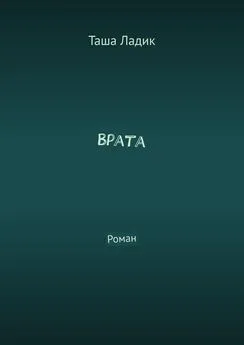Таша Эйрих - Инсайт
- Название:Инсайт
- Автор:
- Жанр:
- Издательство:Манн, Иванов и Фербер
- Год:2018
- Город:Москва
- ISBN:9785001170136
- Рейтинг:
- Избранное:Добавить в избранное
-
Отзывы:
-
Ваша оценка:
Таша Эйрих - Инсайт краткое содержание
Инсайт - читать онлайн бесплатно ознакомительный отрывок
Интервал:
Закладка:
youtube.com/user/mifbookstv
Дерево знаний
Предложите нам книгу
Ищем правильных коллег
Полезные книги в подарок
Корпоративная библиотека
Книги ищут поддержку
Над книгой работали
Главный редактор Артем Степанов
Ответственный редактор Наталья Шульпина
Литературный редактор Юлия Жандарова
Арт-директор Алексей Богомолов
Дизайнер Наталья Савиных
Верстка Лариса Чернокозинская
Корректоры Наталья Сидоренко, Елена Попова
ООО «Манн, Иванов и Фербер»
mann-ivanov-ferber.ru
Электронная версия книги подготовлена компанией Webkniga.ru, 2018
Примечания
1
Джордж Вашингтон. Письмо Джону Огастину Вашингтону от 31 мая 1754 года.
2
Джордж Вашингтон. Письмо Роберту Динвидди от 3 июня 1754 года.
3
Ron Chernow. Washington: A Life. Penguin, 2010, p. 49.
4
Во всей книге основные термины, инструменты и выводы выделены жирным шрифтом для того, чтобы было легче на них ссылаться.
5
Издана на русском языке: Рамачандран В. Мозг рассказывает. Что делает нас людьми. — М.: Карьера Пресс, 2016.
6
Vilayanur S. Ramachandran. The Tell-Tale Brain: A Neuroscientist’s Quest for What Makes Us Human. W. W. Norton & Company, 2012, p. 4. (Рамачандран В. Мозг рассказывает. Что делает нас людьми. М.: Карьера Пресс, 2016.
7
Mark R. Leary and Nicole R. Buttermore. “The evolution of the human self: Tracing the natural history of self-awareness.” Journal for the Theory of Social Behaviour 33.4 (2003): 365–404.
8
Donna Hart and Robert W. Sussman. Man the Hunted: Primates, Predators, and Human Evolution. Basic Books, 2005, pp. 159–164.
9
Этот вывод сделан на основе нашей программы изучения самоосознания.
10
D. Scott Ridley, et al. “Self-regulated learning: The interactive influence of metacognitive awareness and goal-setting.” Journal of Experimental Education 60.4 (1992): 293–306; Saundra H. Glover, et al. “Re-examining the influence of individual values on ethical decision making.” From the Universities to the Marketplace: The Business Ethics Journey. Springer Netherlands, 1997. 109–119.
11
Stephen L. Franzoi, Mark H. Davis, and Richard D. Young. “The effects of private self-consciousness and perspective taking on satisfaction in close relationships.” Journal of Personality and Social Psychology 48.6 (1985): 1584–1594.
12
Clive Fletcher and Caroline Bailey. “Assessing self-awareness: Some issues and methods.” Journal of Managerial Psychology 18.5 (2003): 395–404; John J. Sosik and Lara E. Megerian. “Understanding leader emotional intelligence and performance: The role of self-other agreement on transformational leadership perceptions.” Group & Organization Management 24.3 (1999): 367–390.
13
Heather K. Warren and Cynthia A. Stifter. “Maternal emotion-related socialization and preschoolers’ developing emotion self-awareness.” Social Development 17.2 (2008): 239–258.
14
Vladimir D. Shadrikov. “The role of reflection and reflexivity in the development of students’ abilities.” Psychology in Russia: State of the Art 6.2 (2013).
15
Chris Brown, Roberta George-Curran, and Marian L. Smith. “The role of emotional intelligence in the career commitment and decision-making process.” Journal of Career Assessment 11.4 (2003): 379–392; Romila Singh and Jeffrey H. Greenhaus. “The relation between career decision-making strategies and person-job fit: A study of job changers.” Journal of Vocational Behavior 64.1 (2004): 198–221.
16
Paul J. Silvia and Maureen E. O’Brien. “Self-awareness and constructive functioning: Revisiting ‘the human dilemma.’” Journal of Social and Clinical Psychology 23.4 (2004): 475, 480–481.
17
Anna Sutton, Helen M. Williams, and Christopher W. Allinson. “A longitudinal, mixed method evaluation of self-awareness training in the workplace.” European Journal of Training and Development 39.7 (2015): 610–627.
18
Anna Sutton, Helen M. Williams, and Christopher W. Allinson. “A longitudinal, mixed method evaluation of self-awareness training in the workplace.” European Journal of Training and Development 39.7 (2015): 610–627.
19
Peter Fischer, Tobias Greitemeyer, and Dieter Frey. “Unemployment and aggression: The moderating role of self-awareness on the effect of unemployment on aggression.” Aggressive Behavior 34.1 (2008): 34–45.
20
См. Paul J. Silvia and Maureen E. O’Brien. “Selfawareness and constructive functioning: Revisiting ‘the human dilemma.’” Journal of Social and Clinical Psychology 23.4 (2004): 475, 479–480.
21
Allan H. Church, “Managerial self-awareness in high-performing individuals in organizations.” Journal of Applied Psychology 82.2 (1997): 281–292.
22
Bernard M. Bass and Francis J. Yammarino. “Congruence of self and others’ leadership ratings of naval officers for understanding successful performance.” Applied Psychology 40.4 (1991): 437–454.
23
Bass and Yammarino, “Congruence of self and others’ leadership ratings”; Malcolm Higgs and Deborah Rowland. “Emperors with clothes on: The role of self-awareness in developing effective change leadership.” Journal of Change Management 10.4 (2010): 369–385.
24
Kenneth N. Wexley, et al. “Attitudinal congruence and similarity as related to interpersonal evaluations in manager-subordinate dyads.” Academy of Management Journal 23.2 (1980): 320–330.
25
Atuma Okpara, et al. “Self awareness and organizational performance in the Nigerian banking sector.” European Journal of Research and Reflection in Management Sciences 3.1 (2015); Harry Schrage. “The R&D entrepreneur: Profile of success.” Harvard Business Review, November — December, 1965, 56–69; Korn Ferry Institute. “Korn Ferry Institute study shows link between self-awareness and company financial performance,” kornferry.com, June 15, 2015, http://www.kornferry.com/press/korn-ferry-institute-study-shows-link-between-self-awareness-andcompany-fnancial-performance/.
26
PDI Ninth House. “Accurate self-insight decreases derailment risk,” Leadership Research Bulletin, January 24, 2013, http://www.kornferry.com/institute/565-accurate-self-insight-decreasesderailment-risk.
27
J. Evelyn Orr, Victoria V. Swisher, King Y. Tang, and Kenneth De Meuse. “Illuminating blind spots and hidden strengths,” kornferry.com, September 2010, http://www.kornferry.com/media/lominger_pdf/Insights_Illuminating_Blind_Spots_and_Hidden_Strengths.pdf.
28
University of Phoenix School of Business. “Nearly three-fourths of US workers in their 30s want a career change,” University of Phoenix News release, July 29, 2015, http://www.phoenix.edu/news/releases/2015/07/uopx-survey-reveals-three-fourths-us-workers-intheir-thirties-want-career-change.html; http://www.bls.gov/news.release/pdf/nlsoy.pdf.
29
Издана на русском языке: Бредбери Т., Гривс Дж. Эмоциональный интеллект 2.0.— М.: Манн, Иванов и Фербер, 2017.
30
Меня часто спрашивают о том, как самоосознание связано с эмоциональным интеллектом. Простыми словами, суть эмоционального интеллекта сводится к осознанию и регулированию собственных эмоций и эмоций окружающих, тогда как самоосознание — гораздо более широкое понятие, охватывающее наши внутренние качества, выходящие за рамки эмоций (наши ценности, увлечения, стремления, подходящие условия, паттерны, реакции и влияние на других людей), а также то, как нас воспринимают окружающие.
31
David Dunning, Chip Heath, and Jerry M. Suls. “Flawed self-assessment implications for health, education, and the workplace.” Psychological Science in the Public Interest 5.3 (2004): 69–106.
32
W. W. Abbot, “An Uncommon Awareness of Self,” Prologue: Quarterly Journal of the National Archives and Records Administration 29 (1989): 7–19; repr. in George Washington Reconsidered, ed. Don Higginbotham (University Press of Virginia: 2001).
33
Chernow, p. 603.
34
Chernow., p. 603.
35
Chernow., p. 521.
36
Chernow., p. 378.
37
Chernow., p. 560.
38
Если вам интересно знать, достаточно ли выборки из 50 человек, для того чтобы сделать значимые выводы, важно обратить внимание на разницу между количественными и качественными исследованиями. Хотя большая часть наших исследований носила количественный характер (мы предлагали участникам опроса дать количественную оценку предложенных позиций), наш анализ «единорогов самоосознания» был качественным по сути. Качественное исследование подразумевает более глубокое изучение каждого участника — в нашем случае это происходило в ходе продолжительных бесед — для обнаружения общих тем и закономерностей. Для качественного исследования 50 участников — это действительно достаточно много, особенно учитывая то, что «единорогов» было так трудно найти.
Читать дальшеИнтервал:
Закладка:




![Таша Танари - Подарить душу демону [publisher: ИДДК]](/books/1073950/tasha-tanari-podarit-dushu-demonu-publisher-iddk.webp)
![Таша Танари - Испытать силу демона [publisher: ИДДК]](/books/1073951/tasha-tanari-ispytat-silu-demona-publisher-iddk.webp)




